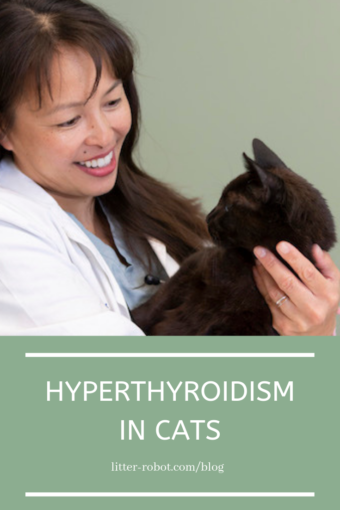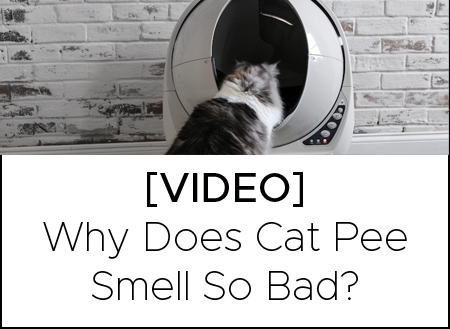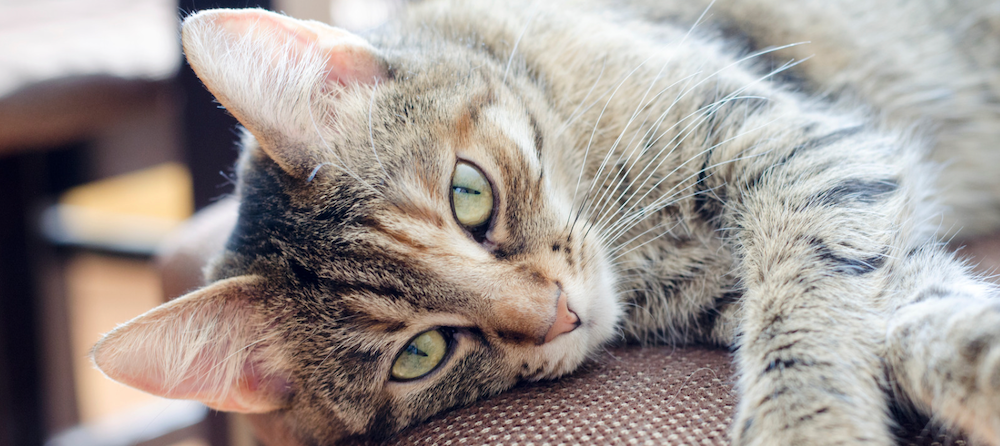As a veterinarian and cat owner, I’m always on the lookout to make sure your cat doesn’t have hyperthyroidism. That’s because my own cat was diagnosed with a thyroid nodule and I know that, untreated, hyperthyroidism in cats can result in severe, potentially life-threatening problems.
So, what is hyperthyroidism?
Hyperthyroidism, a hormone (or “endocrine”) disorder, is when the thyroid gland produces too much thyroid hormone. This results in an overstimulated, hyperactive metabolism. This is seen in cats, but almost never in dogs (who can have an underactive thyroid or “hypothyroidism”).
What are the signs of hyperthyroidism in cats?
Hyperthyroidism is often seen in middle-aged to geriatric cats (around 8+ years of age). Signs of hyperthyroidism include:
- Nervousness
- Gradual weight loss
- Drinking more water than usual (hanging out by the water bowl more)
- Larger clumps in the litter box
- Vomiting more frequently
- A racing heart rate
- Breathing harder or even panting after playing
- A poor haircoat (e.g., excessive shedding, more dandruff or mats, etc.)
- Eating ravenously despite weight loss
- Longer, more fragile nails (or the need to cut your cat’s nails more frequently)
- Increased activity (e.g., hyperactivity)
Hyperthyroidism also results in certain physical examination findings that your veterinarian will detect or changes in diagnostic tests such as:
- A thin body condition
- The presence of a soft heart murmur
- A palpable thyroid nodule
- Signs of elevated blood pressure (e.g., bounding femoral pulses, changes to the retina or back of the eyes)
- Thinning of the face (e.g., a more triangular appearance to your cat’s face)
- An elevated blood pressure (> 160 mm Hg, systolic)
- An elevated thyroid level (T4)
- Increased liver enzymes
- Dilute urine
Untreated, hyperthyroidism can result in:
- High blood pressure
- Thickened heart muscles and dilated chambers of the heart
- Congestive heart failure (e.g., fluid backing up into the lungs)
- An increased risk of stroke or clots
- Changes to retina (e.g., the backs of the eyes)
- Sudden blindness (from detached retinas)
- Seizures
- Sudden death
How do you diagnose hyperthyroidism in cats?
The first two ways of diagnosing hyperthyroidism is based on physical examination and a history of clinical signs. Normally, we veterinarians should not be able to feel the thyroid glands on exam (which normally lie near the trachea or voice box). If we veterinarians palpate a thyroid nodule (e.g., a small pea-sized mass or masses), it warrants doing blood work to test for hyperthyroidism. (This is one of the reasons that as your cat ages, it’s especially important that your cat have an annual examination at your veterinarian—we can screen for early problems like this!)
Keep in mind that the presence of a thyroid nodule may not always mean that your cat is hyperthyroid now (depending on what blood work shows), but it’s likely your cat will eventually become hyperthyroid. This may take several months to years to develop, as it may not be “functional” yet; my recommendation is to do yearly blood work thereafter (sooner, if your cat is showing signs).
Rest assured: In cats, feeling a nodule in the neck area is rarely cancerous (< 5%), as compared to dogs, where it is typically cancerous.
The main way of diagnosing hyperthyroidism is based on an elevated thyroid blood test called a T4. 90% of cats can be diagnosed with this test; however, rarer cats may need a full or more extensive thyroid panel that looks at multiple thyroid function tests (e.g., T3, TSH, etc.). Also, routine blood work should be done to evaluate the kidneys, liver, electrolyte balance, white and red blood cells, protein levels, and urine concentration ability.
How do we treat hyperthyroidism in cats?
If your cat was just diagnosed with hyperthyroidism, you should seek treatment sooner than later. The sooner we diagnose it, the sooner we can minimize secondary life-threatening complications or damage to the body.
There are several options for treatment of hyperthyroidism in cats, and you have to weigh the pros and cons of each. While some seem less expensive up front, they may require long-term (e.g., for the rest of your cat’s life) oral medication, methimazole. Other most expensive treatments include radioactive iodine treatment (I131), surgery (rarely done anymore), or even chemical ablation, but this immediately treats the hyperthyroidism and typically doesn’t require lifelong treatment.
In my opinion, the cost (and number of veterinary visits) all washes out in the end, and the amount that you end up paying in the long term works out to be the same if you choose radiation therapy. Personally, I can’t medicate my cat twice a day (for the rest of his life), so I’d consider radiation therapy (which requires hospitalization for about one week).
You can see treatment options here by board-certified veterinary internist and endocrinologist, Dr. Mark Peterson.
When in doubt, as your cat ages, make sure to monitor him for the clinical signs of this common endocrine disease. The sooner you recognize it, and the sooner your veterinarian diagnoses it, the less long-term damage to your cat’s body—and the longer he will live!
Recommendations









